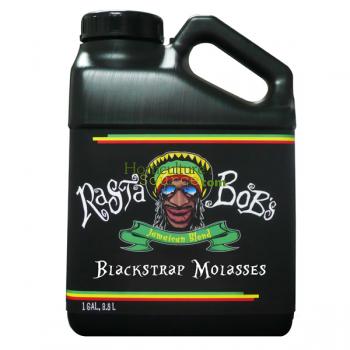Last time I posted I began discussing this link about horticultural molasses. Let’s continue with the dissection:

“When molasses is sprayed directly on plants, it is absorbed straight into the plant. Once absorbed, the sugar content of the plant goes up. If you need proof, go pour a Coke on a spot in your lawn, in a week you will see exactly what I mean. Simple sugars are how plants store energy for rainy days and winter hibernation. So, why is this important to you as a gardener? Aside from basically giving your plants a power boost, you are stopping bugs. “What?” you ask. Yes, it stops bugs. Insects are very simple creatures. They can only feed within a narrow window of sugar content. When the sugar content of plants is raised, insects can’t feed on them. They take one bite and move on.
“The second way molasses controls insects, is by being directly ingested by the insect. What most people don’t know is that only Sugar Ants and bees can process the simplest sugars. Insects have no way of expelling the gas that builds up from fermenting sugar and the vegetation in their gut (draw your own mental pictures please). Plus, they have exoskeletons and can’t get bloated. Their delicate internal organs are crushed from the inside out. All a bug needs to do, is walk through or try to feed on a molasses covered plant. Insects are constantly cleaning themselves. They will try to lick the molasses off their feet and swallow it. If they take a bite of a molasses coated plant, they will swallow it.”
Some specific observations and comments:
1) “If you need proof, go pour a Coke on a spot in your lawn, in a week you will see exactly what I mean.” I just don’t think I can do this comment justice, so I’ll leave it to your imagination as to what you might see and how it relates to a 1% molasses solution sprayed onto leaves.
2) “Simple sugars are how plants store energy for rainy days and winter hibernation.” Actually, no. Simple sugars are difficult to store as they contain a lot of water and they can be quite reactive. Plants transform simple sugars (monosaccharides and disaccharides) into polysaccharides for storage.
3) “Insects are very simple creatures. They can only feed within a narrow window of sugar content. When the sugar content of plants is raised, insects can’t feed on them. They take one bite and move on.” Obviously the author has never seen Men In Black.

Give me sugar…in water
4) “What most people don’t know is that only Sugar Ants and bees can process the simplest sugars.” Please explain this to the cockroach I once saw in a sugar bowl.
5) “Insects have no way of expelling the gas that builds up from fermenting sugar and the vegetation in their gut. Their delicate internal organs are crushed from the inside out.” Did you know that termites are significant producers of methane gas – a byproduct of fermentation? And they release it the old-fashioned way.

From NASA’s website on methane production
More next week!
I love it. Wow tater beetles ‘sploding right before my eyes…. this would make a great organic fireworks show.Poof, stink bugs expanding and looking like blow fish or sated dog ticks. …. just wallering around out there on on the ground. What litter-ature search were you doing when you encountered this?
Wes, the blog link was sent to me by a friend/colleague who knows how to push my buttons! I just couldn’t resist using it for our blog.
Brought to mind one of my favorite Far Sides:
Can you please describe simple sugars to me? Doesnt a maple tree store simple sugars? How does a tree or plant produce simple sugars? Is this not a defense mechanism for fighting disease? I just remember the old timers that would cure meat. There were essentialy two ways of doing it. 1- to apply salts to kill all the bacteria nonselectivly and dehydrate the water. 2- add sugars and smoke the meat to dehydrate. The point being is are we not talking about bacteria and resperation? If good bacteria (aeraobic) is a defense mechanism how can we use that to our advantage? I dont know if using a biproduct from the production of sugar is anything more than someone trying to make money from something that they should be giving away, similar to gypsum for soils!!!
I prefer my molasses in cookies.
Bobby, simple sugars are single unit sugars like glucose and fructose. Glucose is formed through photosynthesis, and the other sugars are biochemical modifications of this structure. (Strictly speaking, sucrose is not a simple sugar since it’s a disaccharide – a glucose+fructose combination.) Plants store polysaccharides or complex carbohydrates; they contain less water so weigh less and they aren’t reactive like monosaccharides. They are converted to simpler sugars (monosacchardies, disaccharides, sometimes a bit bigger) when they are transported to other parts of the plant. This is what you get when you tap maple trees – you’re interrupting the flow of sugars from stored carbohydrates (starch) to emerging leaf buds.
Sugars are anything but defensive. They are a simple form of consumable energy. Plants spend a lot of their extra resources making defenses to protect their sugars.
Termite flatulence as a major source of greenhouse gas pollution is just too awesome, in a somewhat juvenile, but (dunno why) immensely satisfying way. Major thanks for that.
Linda, that was a tongue in cheek comment. Of course, I read the first installment and look forward to the entertainment value of the next.
Wes, you caught me before my morning tea had kicked in fully!
I now have an image of aphid farming ants wandering around with refractometers checking to see if its going to be a good year for honeydew.
I enjoy your efforts to separate myth from fact, and especially to expose inflated claims. However, I have lived long enough to see many organic(i.e. ecologically sound agricultural practices) that clearly work that lacked scientific explanation at the time, be explained by non-scientific amateurs and venders with bad and improbable science. The efficacy of compost–“black gold”–“black magic”– is a case in point; that is we know now why it works so well (Soil Biology Primer), but didn’t in 1950.
I have heard that molasses stimulates actinomycetes. Spinosad is common fire ant pesticide “Come and Get It”. From Wikopedia: Spinosad insecticide is based on a compound found in the bacterial species Saccharopolyspora spinosa (S. spinosa). The genus of Saccharopolyspora was discovered in 1975 by Lacey and Goodfellow, who described isolates from crushed sugar cane which produce yellowish-pink aerial hyphae, with beadlike chains of spores enclosed in a characteristic hairy sheath.[1] This genus is defined as aerobic, gram-positive, non-acid-fast actinomycetes with fragmenting substrate mycelium. S. spinosa was isolated from soil collected inside a non-operational sugar mill rum still in the Virgin Islands.
My point is that emphasizing the lack of scientific confirmation is a safe approach. Ridiculing people’s explanations of their observations (which could be lies of course) is less useful than simply saying there is no peer reviewed scientific evidence it works and the explanations for molasses efficacy if there is any, are incorrect.
Bob, I appreciate your thoughtful comments. You’re right, I could just discuss this objectively (and I do just that quite often). But authoritative-sounding web pages like this one create continual headaches for me and other university educators, so my exasperation seeps through in what was meant to be a humorous analysis. I’m much less curmudgeonly when people simply ask questions, as opposed to making stuff up.
One plausible mechanism: foliar sugar application can simulate extrafloral nectaries, which are known to attract beneficial insects. There are few relevant peer reviewed studies.
Of course, it could also attract aphids, and is a feeding stimulant for mites and thrips.
Do the beneficial fungii and bacteria in the soil not feed on the sugars they get access to?
Sure….but they feed on anything. And complex carbohydrates like those found in decomposing plants last a lot longer and sustain those populations better than fast food (sugar).
Don’t the fungi and the bacteria in the soil thrive on the sugar? I’ve been using su-ca-nat (evaporated cane juice residue), no heat used in extraction and I believe I’m seeing better results. This subjective preception is born out by what my logs say.
Sorry didn’t mean to be redundant. I mean during late bloom
Can I add molasses to worm pea to fight pathogens
All microbes, including pathogens, consume sugars. In fact, E. coli and Salmonella have both been found to increase when molasses is added to compost tea.
Would the sugar I’ve described, i.e. evaporated cane juice residue be a complex or a simple sugar and would i, in your highly educated opinion be particularly beneficial to the microorganisms?
Yes, sugars of any sort are beneficial to fungi and bacteria (good and bad alike). It’s a quick source of energy that requires relatively little enzymatic action to break down.
i have a question, have you done any experiments to see if sugars work as an insecticide or are your comments based solely on your perceptions of the current knowledge you have? i believe that without actual experimentation your comments are no more than an opinion. there could be many reason not know to you as to why it might work assuming that it might work.
It’s not the purview of scientific inquiry to prove things don’t work. It is the responsibility of proponents to publish peer-reviewed science to show that it does.
Can someone please share practical experiences.I farm sweet paper, thrips and mites are becoming a night mare
This isn’t a DIY/home remedy site. It’s a science-based gardening blog. Molasses doesn’t do anything miraculous. There are many ways pests can be controlled via IPM/Plant Health Care. You should contact your local extension office for suggestions.